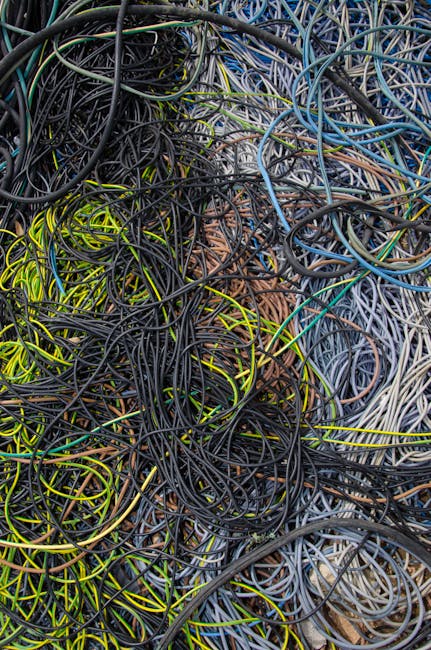South African online gamers are on the brink of a significant upgrade. The upcoming Umoja subsea cable promises to dramatically reduce South Africa Australia gaming latency. This means multiplayer titles with players in Oceania will soon offer a much smoother experience. Google announced its Umoja cable route in May 2024. This vital connection will run between Kenya and Australia. It includes a land route to South Africa’s coast. From there, a direct undersea cable will link to Australia. This development is set to transform cross-continental online interactions.
Google has shared limited details about the Umoja cable. A rough map of its layout and a launch date in early 2026 are confirmed. The cable’s cost, specific coastal landing stations, and expected round-trip latency remain a mystery. Google and cable builder SubCom have not commented on these details. However, Google has confirmed the total length. The cable route will span 13,000km. It will originate in Nairobi, Kenya. Then, it will pass through Uganda, Rwanda, the Democratic Republic of the Congo, Zambia, and Zimbabwe. Finally, it will reach South Africa.
Understanding Latency and the Umoja Cable’s Impact on South Africa Australia Gaming Latency
Calculating theoretical one-way latency on an optic fibre cable is straightforward. You divide the distance by 200,000. This figure represents the speed of light in kilometres per second. For example, the distance between South Africa’s east coast and Perth, Australia, is about 8,000km. South Africa’s existing fibre landing stations are in Amanzimtoti and Mtunzini. Applying the formula, this distance works out to roughly 40ms for one-way latency. The theoretical round-trip latency between these points should therefore be 80ms. This assumes the most direct route possible.
However, real-world conditions introduce complexities. Slight cable deviations occur due to seafloor features. Inherent telecommunications equipment delays also add to the time. Therefore, the actual latency will likely be slightly longer. With an additional overhead of 10ms to 30ms, a more realistic round-trip latency would be 90ms to 110ms. Moving further to the west coast of Australia could add another 40ms. This would place the latency between South Africa and Australia roughly between 110ms and 150ms. The exact figure depends on the specific location. This range is substantially better than what is currently available.
According to Wondernetwork, current average latencies are much higher. Between Johannesburg and Perth, it is around 340ms. For Johannesburg and Sydney, it’s approximately 409ms. All existing undersea fibre routes between South Africa and Australia are indirect. They currently travel through North or South America. Alternatively, they move along the Asian coastline. This significantly increases the travel distance for data.
Current Struggles for South African Gamers
South African gamers often face frustration. Many competitive multiplayer titles lack local servers. Even some popular games require connections to distant servers. In most cases, the servers with the lowest latency are in the United Kingdom or Europe. Round-trip latencies for these connections typically range between 160ms and 200ms. This puts South Africans at a considerable disadvantage. Especially in fast-paced first-person shooters, quick reactions are critical. High latency can mean the difference between victory and defeat. For those interested in improving their gaming experience, checking out new titles like EA Sports FC 26 Review: Dual Gameplay Modes Explored can be exciting, but the underlying connection speed remains crucial.
South Africa has a large gaming population, with roughly 26.5 million gamers. However, the vast majority play on mobile devices. PC and console gamers account for about 4 million. With players spread across many titles, only the most popular games receive local server support. Battle royale games are often excluded from local server hosting. This is because they require a large number of players to fill a lobby.

Australia, in contrast, hosts servers for more games than South Africa. This makes sense given its much larger console and PC gaming market. The Australia Plays 2023 study highlights this difference. Roughly four in every five Australians play video games. Furthermore, 81% of households with gamers own a video game console. And 59% have a gaming PC. This robust market supports a wider array of local gaming infrastructure.
Beyond Gaming: Connecting Communities
The Umoja cable offers benefits beyond just gaming. It will also enhance connections for friends and family across the Indian Ocean. Australia and New Zealand are popular emigration destinations for South Africans. New Zealand had a significant South African diaspora. By 2023, it stood at 95,577, making it the fifth largest. As of 2024, approximately 224,160 South Africans resided in Australia. Only the UK hosted more South African expats. The new cable will make online interactions, such as video calls and collaborative work, much smoother for these communities.
Currently, cross-continental gaming between South Africa and Australia faces major hurdles. When playing with users on Australia’s west coast, servers in Asia often offer the best balance of latency. This caters to both locations. For users on the East coast, connecting to servers in North or South America is often necessary. These serve as ideal mid-way latency stops. In both scenarios, the best possible round-trip latencies to these servers range between 200ms and 300ms. Such high latency makes for a nearly unplayable experience in games demanding quick reaction times. The Umoja cable will directly address these significant challenges. For more insights into how technology impacts daily life, consider reading iOS 26 Long-Term Review: 3 Months In, which explores user experience with advanced tech.
It is important to note that accessing this lower-latency connection depends on your internet service provider (ISP). Users will need an ISP that leases capacity on the Umoja cable. This ensures that the benefits of this new infrastructure reach individual homes and businesses. The Umoja cable is poised to be a game-changer. It will significantly improve online experiences across the Indian Ocean.

The Future of Connectivity
The Umoja cable represents a monumental step forward for South African connectivity. It promises to unlock new possibilities for gamers and general users alike. The reduction in South Africa Australia gaming latency will level the playing field for competitive players. It will also foster stronger connections between families and friends. As we approach its early 2026 launch, anticipation for this vital link continues to grow. This infrastructure investment underscores the increasing importance of global, high-speed digital pathways.



